House Martin, Huiszwaluw, Mehlschwalbe, Adorinho-dos-berais, Avión Común
Spotted on our property Monte Horizonte in the Alentejo region of Portugal. House Martin sound
The Common House Martin (Delichon urbicum), sometimes called the Northern House Martin or, particularly in Europe, just House Martin, is a migratory passerine bird of the swallow family which breeds in Europe, north Africa and temperate Asia; and winters in sub-Saharan Africa and tropical Asia. It feeds on insects which are caught in flight, and it migrates to climates where flying insects are plentiful. It has a blue head and upperparts, white rump and pure white underparts, and is found in both open country and near human habitation. It is similar in appearance to the two other martin species of the Delichon genus, which are both endemic to eastern and southern Asia. It has two accepted subspecies.
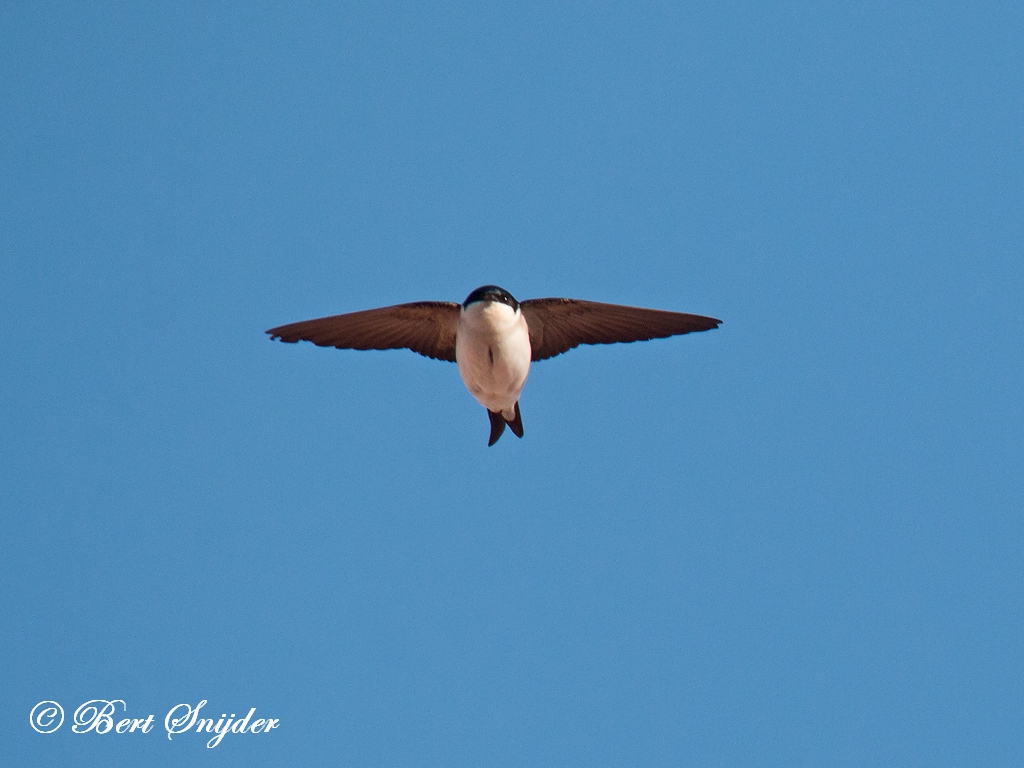
More photos at the bottom of this page:
Both the scientific and colloquial name of the bird are related to its use of man-made structures. It builds a closed cup nest from mud pellets under eaves or similar locations on buildings usually in colonies, but sometimes fouling below nests can be a problem.
It is hunted by the Eurasian Hobby (Falco subbuteo), and like other birds is affected by internal parasites and external fleas and mites, but its large range and population mean that it is not threatened globally. Its proximity to man is generally accepted leading to some cultural and literary references.
The adult Common House Martin of the western nominate race is 13 centimetres (5.1 in) long, with a wing span of 26–29 centimetres (10.2–11.4 in) and a weight averaging 18.3 grammes (0.65 oz). It is steel-blue above with a white rump, and white underparts, including the underwings; even its short legs have white downy feathering. It has brown eyes and a small black bill, and its toes and exposed parts of the legs are pink. The sexes are similar, but the juvenile bird is sooty black, and some of its wing coverts and quills have white tips and edgings. D. u. lagopodum differs from the nominate race in that its white rump extends much further onto the tail, and the fork of its tail is intermediate in depth between that of D. u. urbicum and that of the Asian House Martin.
The white rump and underparts of the Common House Martin, very noticeable in flight, prevent confusion with other widespread Palaeoarctic swallows such as the Barn Swallow (Hirundo rustica), Sand Martin (Riparia riparia) or Red-rumped Swallow (Cecropis daurica). In Africa, confusion with Grey-rumped Swallow (Pseudhirundo griseopyga) is possible, but that species has a grey rump, off-white underparts and long, deeply forked tail. The Common House Martin flies with a wing beat averaging 5.3 beats per second, which is faster than the wing beat of 4.4 beats per second for the Barn Swallow.
The Common House Martin is a noisy species, especially at its breeding colonies. The male’s song, given throughout the year, is a soft twitter of melodious chirps. The contact call, also given on the wintering grounds, is a hard chirrrp, and the alarm is a shrill tseep.
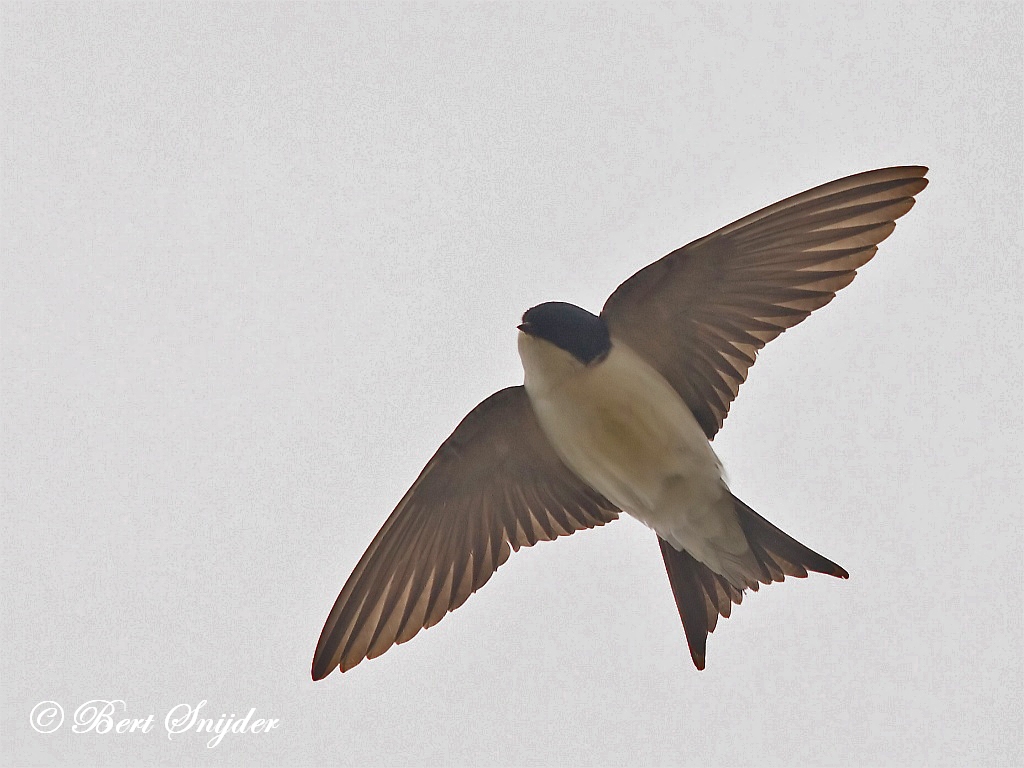
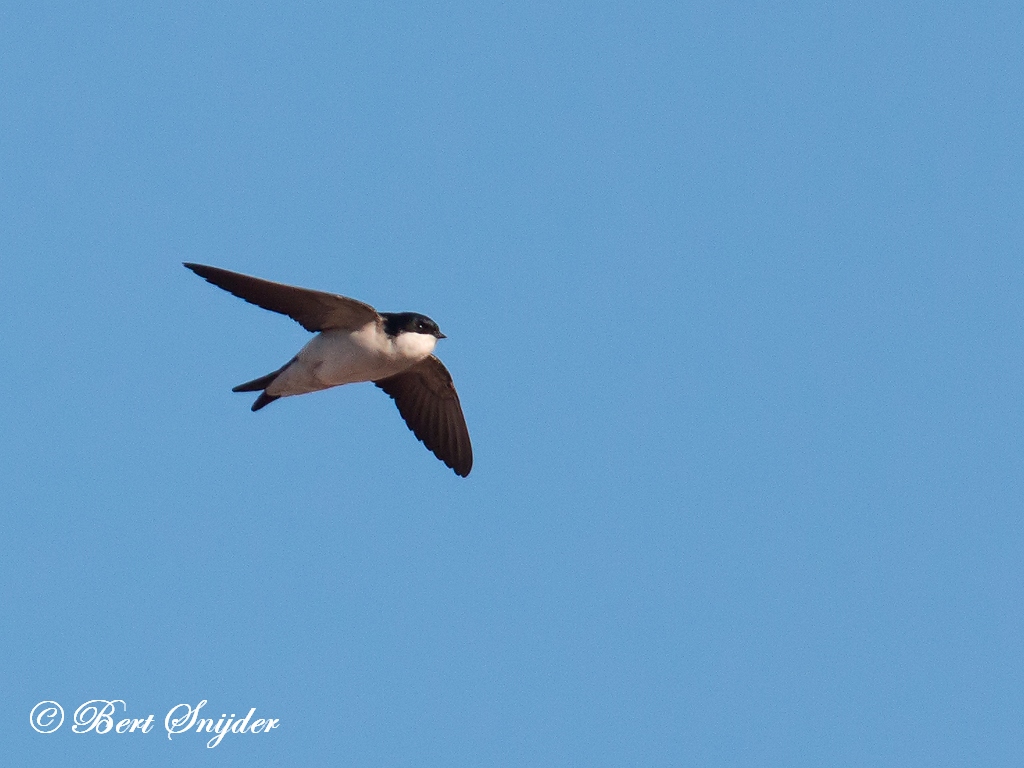
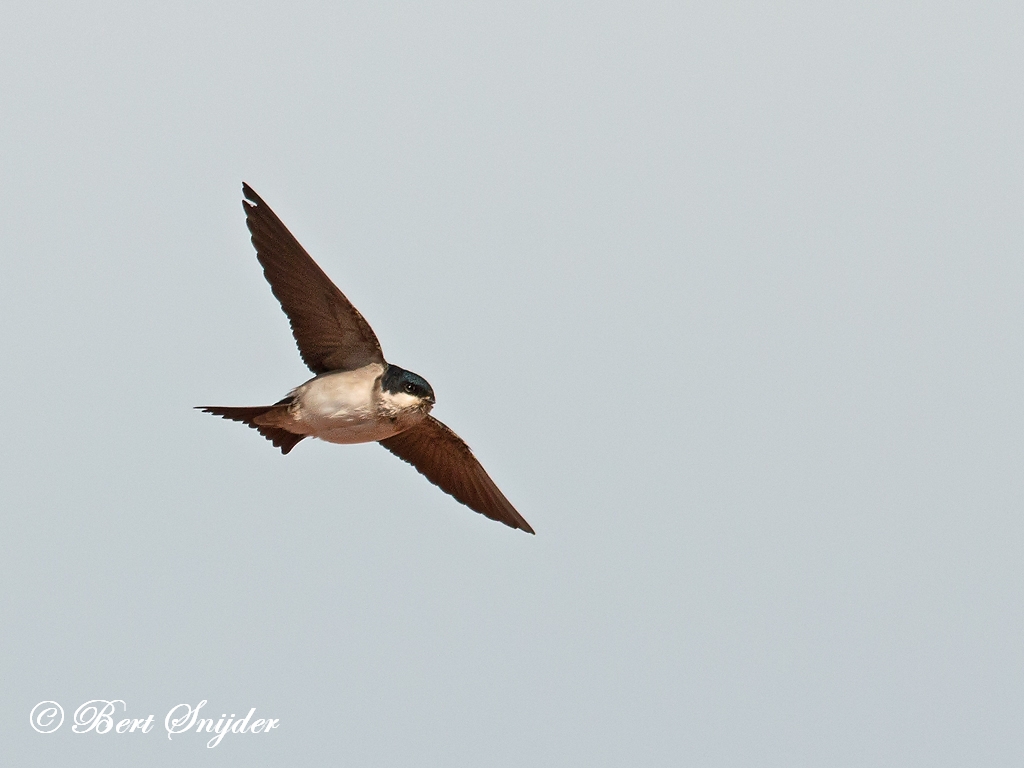
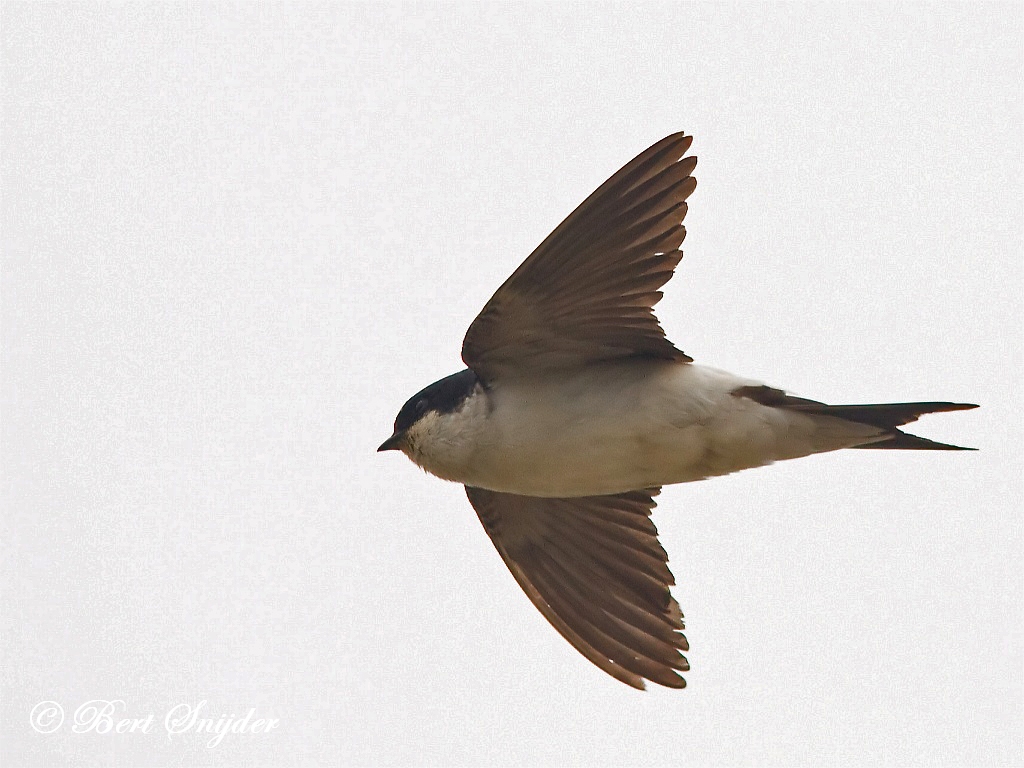
Other synonyms:
Afrikaans: Huisswael
Asturian: Andarina Culu Cande, Andarina del Culu Blancu
Breton: Ar wennili-doenn, Gwennili lost-berr, Gwennili-vein-do
Catalan: Cabot, Oreneta cuablanca, Oroneta cuablanca, Roquer
Catalan (Balears): Cabot
Valencian: Roquer
Czech: jiøièka obecná, Jiricka obecná
Welsh: Gwennol fronwen, Gwennol y bargod, Gwennol y bondo, Marthin penbwl
Danish: Bysvale
German: Mehlschwalbe
English: Common House Martin, Common House-Martin, European House Martin, European Martin, House Martin, House-Martin, Northern House Martin, Northern House-Martin
Esperanto: murhirundo
Spanish: Avion Común, Avión Común, Avíon común
Estonian: Räästapääsuke
Basque: Enara azpizuri, Enara azpizuria, Oreneta cuablanca
Finnish: Räystäspääsky
Faroese: Lonasvala
French: Hirondelle de fenêtre
Frisian: Hússwel
Irish: Gabhlán Binne
Gaelic: Gobhlan-Taighe
Galician: Andoriña de cu branco, Oreneta cuablanca
Manx: Gollan Thie
Croatian: Piljak
Hungarian: Molnárfecske
Indonesian: Layang-layang rumah
Icelandic: Bæjasvala
Italian: Balestruccio, Balestruccio eurasiatico
Japanese: nishiiwatsubame, Nishi-iwatsubame, Nishiiwa-tsubame
Cornish: Chycok
Kwangali: Sisampamema
Latin: Chelidonaria urbica, Delichon albigena, Delichon urbica, Delichon urbicum, Hirundo urbica
Lithuanian: Langine kregžde
Maltese: îawwiefa
Dutch: Huiszwaluw
Norwegian: Hussvale, Hvitryggsulu, Taksvale
Polish: Jaskólka rudawa, oknówka, Oknówka zwyczajna
Portuguese: andorinha dos beirais, Andorinha-dos-beirais, Andorinho-dos-beirais
Romansh: Randulina clera
Russian: Gorodskaya Lastochka
Sardinian: Arrùndili, Varzìa
Scots: Gobhlan taighe
Northern Sami: Beškkoš
Slovak: belorítka domová
Slovenian: mestna lastovka
Albanian: Babil, Dallëndyshe kërbishtbardhë
Serbian: gradska lasta, gradska lasta, piljak
Sotho, Southern: Lekabelane
Swedish: Hussvala
Swahili: Mbayuwayu-kaya
Travel Birdwatching Holiday Alentejo, Vacation Portugal for birders guided birdwatching Tours and Trips.